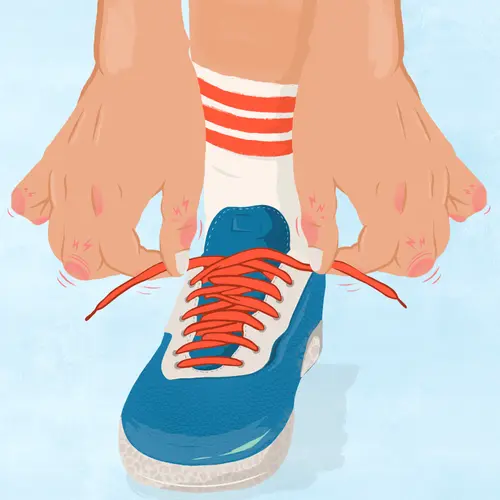You can make your day-to-day life with rheumatoid arthritis (RA) easier by going to physical therapy. It helps you move better, get stronger, and maybe even have less pain.
To get started, ask your rheumatologist for a referral. They may have a physical therapist that they often work with. You can also check the American Physical Therapy Association’s website (apta.org) for licensed physical therapists in your area.
Set Goals
Think about the things that you most want to improve. Is it your weekend hike, picking up your kids (or grandkids), going up and down stairs, pushing a grocery cart, or reaching up to blow-dry your hair?
Tell your physical therapist about it.
“We can teach you moves and stretches to help improve your strength and range of motion, which will allow you to maintain those important daily functions,” says physical therapist Jan Richardson, PhD, professor emeritus at Duke University School of Medicine.
Push Your Limits -- Safely
You might learn in physical therapy that you can do more than you think.
“In the past, it was thought that RA patients should stay away from high-impact types of aerobic exercise, like running, as well as weightlifting, because it would exacerbate [worsen] the disease,” Richardson says. But now it’s clear that people with RA who do those types of things “actually have healthier joints, even as they grow older.”
Make sure you get aerobic exercise (cardio), because RA can mean you’re more likely to get heart disease, says Maura Iversen, a professor of physical therapy, movement, and rehab sciences at Northeastern University.
What activities sound like fun to you? “It could be tai chi classes, swimming, or yoga,” Richardson says. “One program won’t necessarily fit the bill for every patient, so work with your physical therapist to find something that works for you.”
Listen to Your Body
You need a good balance between rest and exercise. Physical therapy is a great place to tune in to that.
The first step is to learn the difference between a symptom of joint inflammation and muscle soreness from exercise.
“If your hands or wrists feel hot, swollen, and painful, that’s different from an ache that you’d feel after starting a new exercise program,” Richardson says. “Your physical therapist can help you learn to distinguish the two over time and determine when it’s OK to ramp up your activity and when to cut back.”
Do Your Homework
RA can make your joints achy in the morning.
“Stretch around a bit before you get out of bed, and check which joints feel stiff and which ones you want to focus on that day,” Iversen says.
At your next PT session, tell your physical therapist what you felt. They can show you more moves that will help.
If your RA makes you tired, break up your at-home exercise into short chunks. Take it bit by bit. “You can increase how often and how long you exercise as you gain strength, mobility, and flexibility,” Richardson says.
Once you’re done with physical therapy, stay active! You’ll keep those benefits you worked so hard for.

